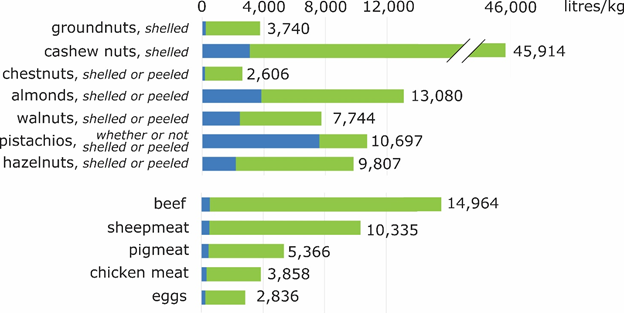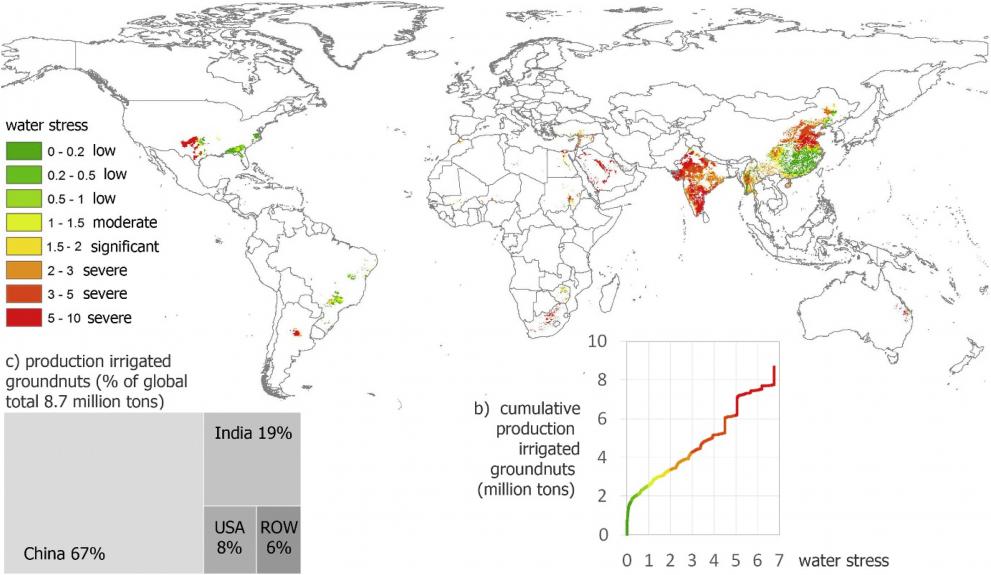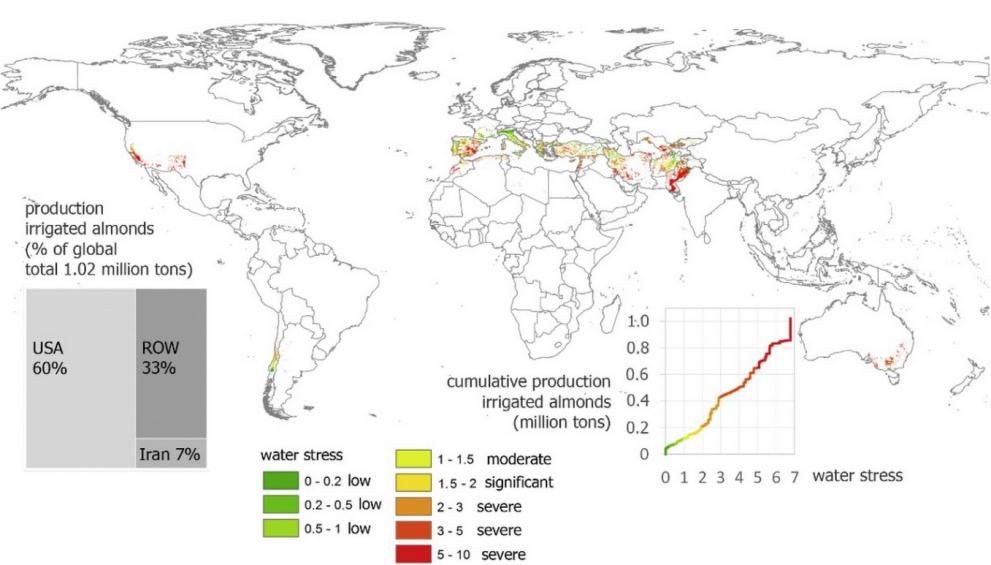
A recent JRC-led article quantifies the water footprints of different types of nut production, and discusses options for water-sustainable nut production.
It finds that 74% of irrigated (as opposed to rainfed) nuts are produced under water stress.
Recommendations to include nuts as part of a healthy diet
Nuts are a great source of nutrients and protein.
They contain mainly unsaturated fatty acids, fibre, vitamins, minerals, antioxidants and phytosterols. Groundnuts (peanuts) contain about 257g/kg of protein, while the protein content of treenuts ranges from 18g/kg (chestnuts) to 200 g/kg (almonds).
They are therefore recommended as a healthy food group by many dietary guidelines, including the recent EAT-Lancet reference diet, which could lead to a substantial increase in future global nut production.
However, nuts require large amounts of water to produce.

Water footprint of nuts
In a new publication in Global Food Security, scientists from the JRC, the University of Twente and the University of Nebraska quantify the amount of global irrigated nut production under water stress.
They find that 74% of irrigated nuts are produced under water stress (of which 63% are under severe water stress), throughout many regions of the world, most notably in India, China, Pakistan, the Middle East, the Mediterranean region and the USA.
Groundnuts account for the largest quantity (8.7 million tons per year) produced under water stress, with hotspots in China and India.

Of the treenuts, almonds account for the largest quantity (1 million tons per year) produced under water stress, of which 60% are produced in California, followed by walnuts (0.67 tons per year), pistachios (0.36 tons per year) and hazelnuts (0.28 tons per year).

In the Mediterranean basin, large amounts of almonds and hazelnuts are produced under water stress, including in Spain, Italy, Greece, Turkey, Israel, Lebanon, Libya, Tunisia and Morocco.
Sustainable production under increasing demand pressure
The authors calculate that, if the global population in 2050 were to adhere to the recommendations of the EAT-Lancet reference diet, global treenut production would have to increase more than 11-fold, and groundnut production almost 7-fold.
As many nuts are already being produced under water stress, such an increase in production should be done in a water-sustainable way.
The authors identify 5 considerations to address in order to ensure water-sustainable nut production:
- Choice of nut type, as some types (such as cashew nuts) are more water-intensive than others (such as peanuts)
- Sustainable intensification of nut production to attain nut type water footprint benchmarks, thereby optimally using available blue and green water resources
- Choice of where to produce nuts
- Integrated Water Resources Management
- Reduction in food loss and waste along the nut supply chain
Such considerations could help reach Sustainable Development Goal (SDG) 2 – Zero Hunger (End hunger, achieve food security and improved nutrition and promote sustainable agriculture), in harmony with SDG 6 - Clean Water and Sanitation (Ensure availability and sustainable management of water and sanitation for all).
Further information
- Treenuts and groundnuts in the EAT-Lancet reference diet: Concerns regarding sustainable water use
- EAT-Lancet reference diet
- JRC and global experts provide recommendations on the SDG indicator “water stress”
Related Content
Treenuts and groundnuts in the EAT-Lancet reference diet: Concerns regarding sustainable water use
JRC and global experts provide recommendations on the SDG indicator “water stress”
Details
- Publication date
- 14 February 2020
